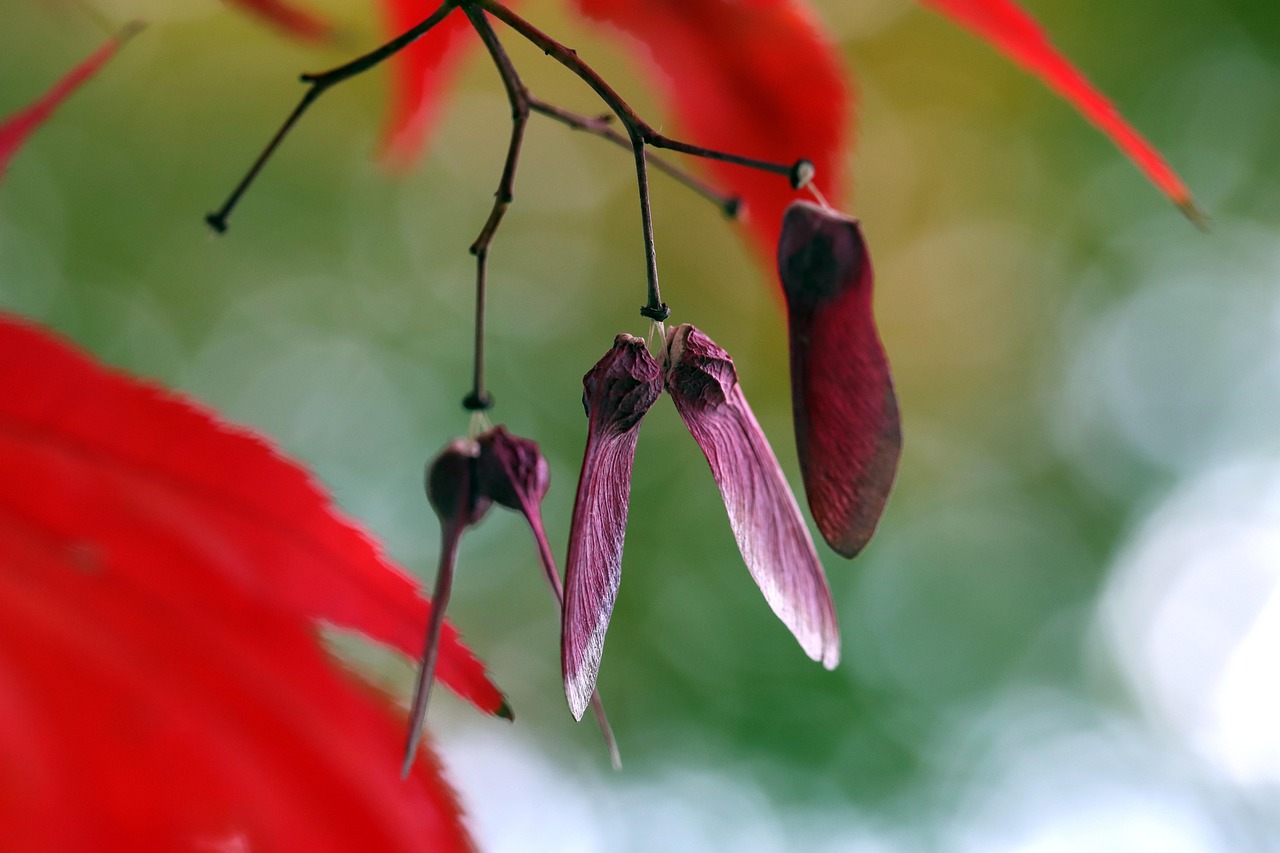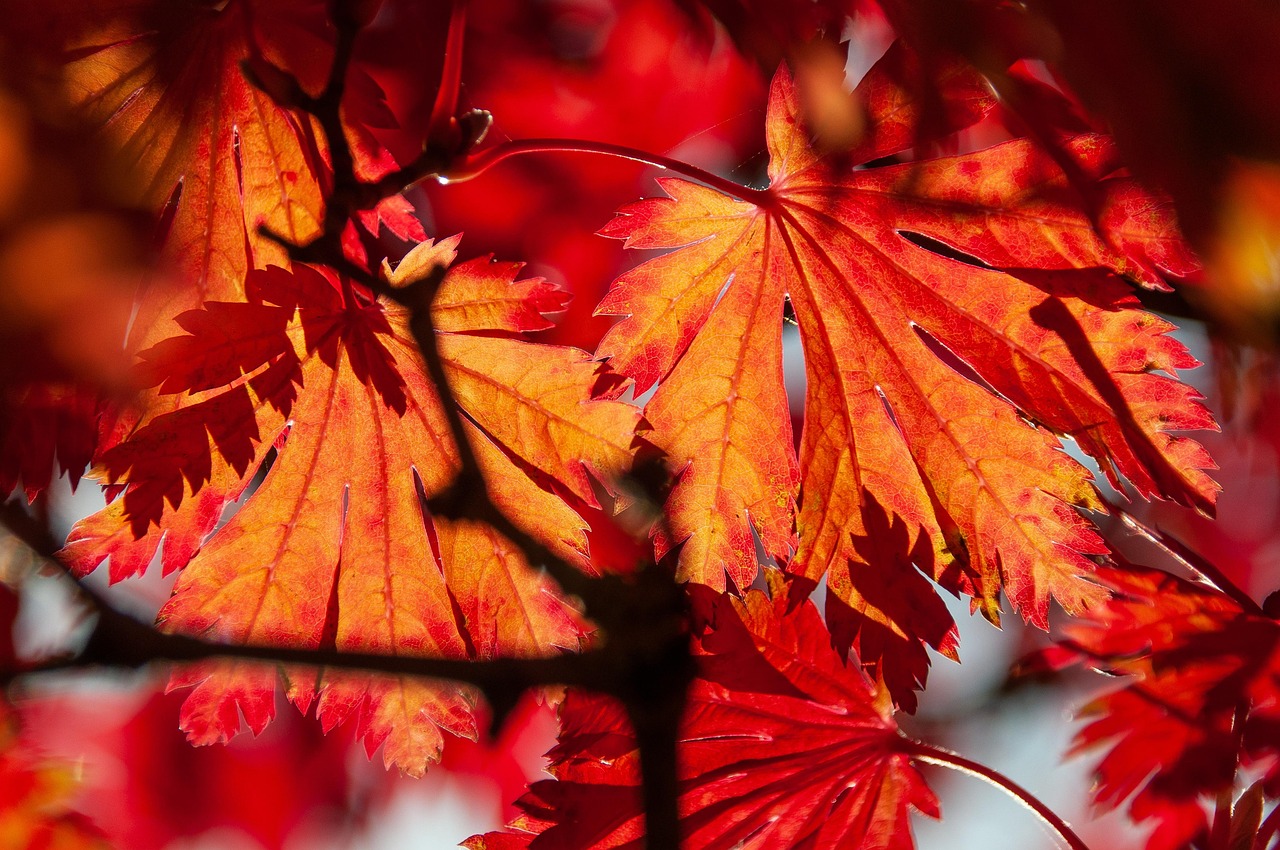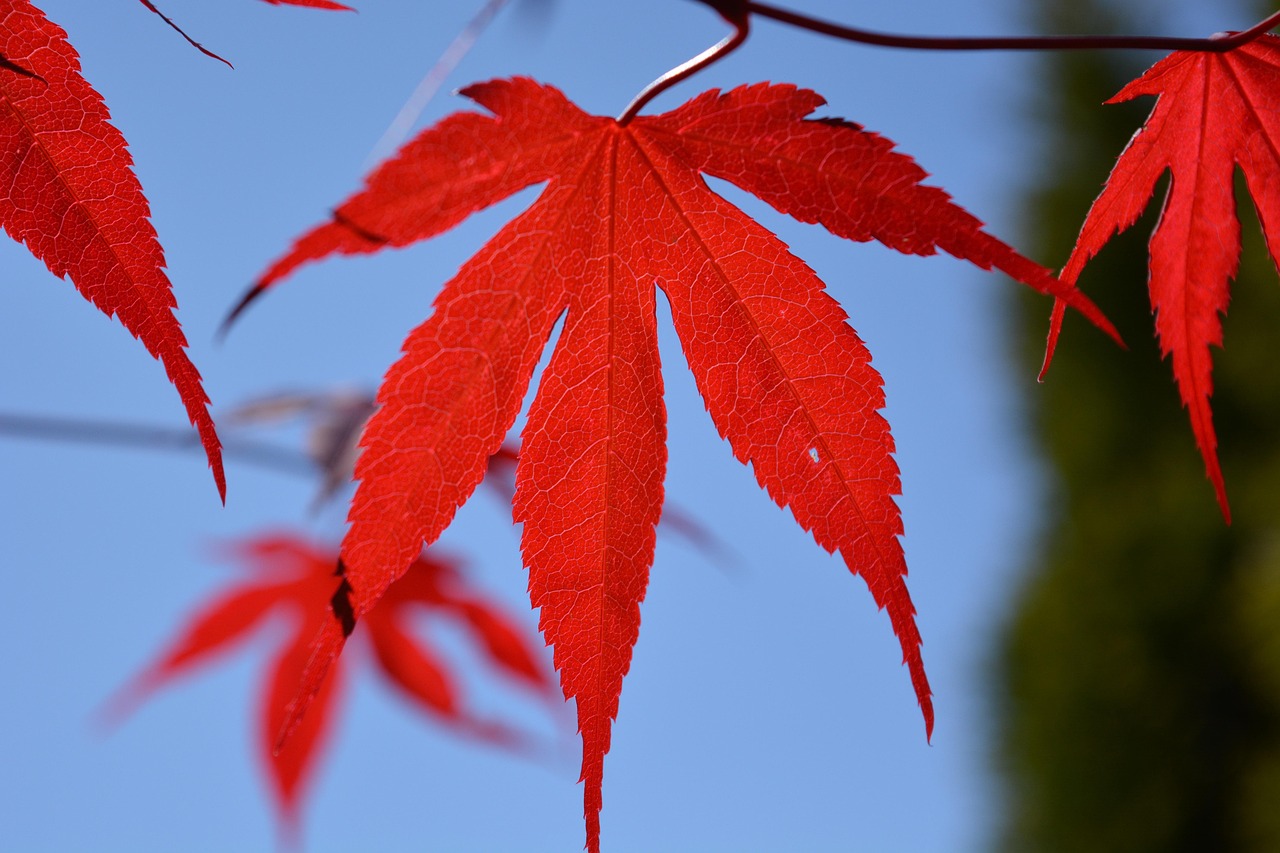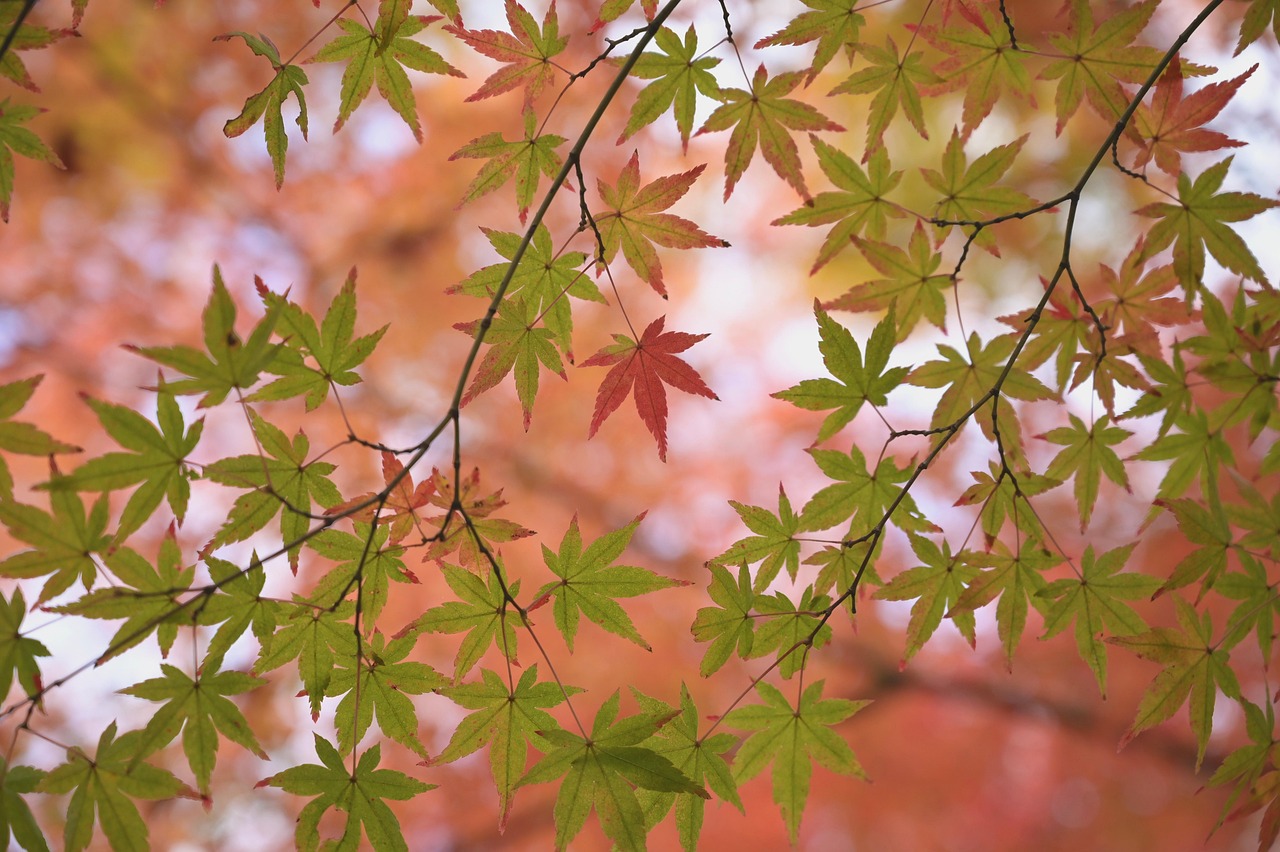To maintain a vibrant canopy on your Red Maple tree, prune during late winter or early spring before new growth begins. Focus on removing dead or damaged branches, thinning crowded areas, and shaping the tree for better sunlight exposure and airflow.
The Red Maple tree, known scientifically as Acer rubrum, is a popular choice for its stunning fall foliage and rapid growth. These trees are adaptable and thrive in various soil types. However, like all trees, they require proper care to maintain their beauty and health. Pruning is an essential aspect of that care, ensuring the tree develops a strong structure and a vibrant canopy.

Pruning Red Maple trees can seem daunting, especially for beginners. However, understanding the right techniques and timing can make the process much easier. Proper pruning not only enhances the aesthetic appeal of the tree but also promotes healthy growth. Moreover, it helps prevent disease by allowing better air circulation and sunlight penetration.
Understanding the Growth Habits of Red Maple Trees
Before diving into pruning techniques, it is critical to understand the growth habits of Red Maple trees. These trees are known for their rapid growth rate, often adding two to three feet per year under optimal conditions. This rapid growth can lead to a dense canopy, making regular pruning necessary.
Red Maples typically have a rounded crown and can grow between 40 to 60 feet tall. Their branches tend to spread wide, which can lead to overcrowding if not managed correctly. It is essential to consider the following factors when planning your pruning sessions:

| Factor | Description |
|---|---|
| Growth Rate | Rapid growth of 2-3 feet per year |
| Height | Can grow 40-60 feet tall |
| Crown Shape | Typically rounded with wide-spreading branches |
| Ideal Conditions | Thrives in various soil types and climates |
Understanding these characteristics will help you determine when and how to prune effectively. Choosing the right time is crucial. Pruning during the wrong season can lead to stress in the tree and may even reduce its vigor and health.
Best Time to Prune Red Maple Trees
The best time to prune a Red Maple tree is in late winter or early spring, just before the buds break. During this period, the tree is still dormant, and pruning will not interfere with its growth cycle. Pruning during dormancy minimizes the risk of bleeding sap, which can occur if cuts are made during the growing season.
Avoid pruning in late fall since it can expose fresh cuts to winter damage. If extensive pruning is required, consider doing it over a couple of seasons to avoid stressing the tree. Additionally, keep an eye on local weather patterns. If an unseasonably warm spell occurs, be prepared to adjust your pruning schedule accordingly.

Essential Pruning Techniques for Red Maple Trees
When pruning Red Maples, several techniques can help maintain their health and appearance. Here are some essential methods to consider:
- Thinning: Remove select branches to improve air circulation and sunlight exposure throughout the canopy.
- Deadwooding: Regularly cut away any dead or damaged branches to prevent disease spread.
- Crown Raising: Trim lower branches to create space beneath the tree, allowing for better access and aesthetics.
- Crown Reduction: If the tree is overgrown, selectively reduce the height or width without compromising its natural shape.
- Shaping: Regularly shape the canopy to encourage a balanced appearance while maintaining its natural form.
These techniques are essential in promoting a healthy tree structure. Always use sharp, clean tools to make precise cuts. This practice helps reduce the risk of infection and ensures that your cuts heal properly.
As you begin your pruning journey, remember that patience is key. Developing an understanding of your Red Maple’s growth habits will ultimately lead to a healthier and more vibrant canopy. Regular maintenance will not only enhance its beauty but also contribute to its longevity for years to come.

Tools Needed for Pruning Red Maple Trees
Having the right tools is essential for effective pruning. The correct tools not only make the job easier but also ensure that the cuts you make are clean and precise. Here are some basic tools you will need:
- Hand Pruners: Ideal for small branches up to ¾ inch thick. These are perfect for making clean cuts on live wood.
- Loppers: Useful for branches up to 2 inches thick. Choose loppers with long handles for better leverage.
- Pruning Saw: Necessary for larger branches, usually over 2 inches thick. A folding saw can be convenient for storage.
- Chainsaw: For very large branches or if you need to remove an entire limb. Ensure you have proper safety gear when using this tool.
- Safety Gear: Always wear gloves, safety goggles, and a hard hat when pruning, especially when working with larger branches.
Before starting your pruning session, inspect your tools. Sharpened and clean tools will provide the best results and minimize damage to the tree.
Common Mistakes to Avoid While Pruning
Pruning can be tricky, especially for those new to tree care. Here are some common mistakes to avoid:
- Pruning at the Wrong Time: As mentioned earlier, pruning during the wrong season can stress your tree. Stick to late winter or early spring.
- Over-Pruning: Removing too many branches can leave the tree weak and vulnerable. Aim for 25% or less of the canopy each year.
- Improper Cuts: Making flush cuts can harm the tree. Always cut just outside the branch collar for better healing.
- Ignoring Tree Shape: Do not prune just to create a specific shape; focus on maintaining the natural form of the tree.
- Neglecting Safety: Always prioritize safety. Make sure you have a safe working environment, especially when using power tools.
Avoiding these mistakes will help ensure your Red Maple tree remains healthy and vibrant. Understanding what not to do is just as important as knowing the right techniques.
Signs Your Red Maple Needs Pruning
Recognizing when your Red Maple tree requires pruning is vital for its health. Here are some signs to look out for:
- Crowded Canopy: If branches are overlapping or competing for space, it is time to thin out the canopy.
- Dead or Diseased Wood: Look for branches that are brittle, discolored, or have fungus growth. These should be removed immediately.
- Weak Structure: If the tree has a lopsided appearance, it may need shaping to improve balance and strength.
- Pest Infestation: If you notice signs of pests, such as holes in leaves or bark, pruning can help remove affected areas.
- Sap Flow: Excessive sap flow can indicate stress or injury, and removing affected branches might alleviate this problem.
Being vigilant about these signs can help you keep your Red Maple healthy and avoid larger issues down the line.
Seasonal Care After Pruning
After pruning, taking care of your Red Maple is essential to promote recovery and growth. Here are some tips on seasonal care:
- Watering: Ensure your tree receives adequate water, especially during dry spells. Newly pruned trees may require more frequent watering.
- Mulching: Applying mulch around the base can help retain moisture and suppress weeds. Use organic mulch to improve soil quality over time.
- Fertilizing: After pruning, consider applying a balanced fertilizer in early spring to support new growth. Follow the recommended guidelines for application rates.
- Pest Monitoring: Keep an eye out for any signs of pests or diseases after pruning. Early detection can prevent more significant issues.
- Regular Inspections: Check your tree periodically throughout the growing season to assess its health and growth patterns.
Caring for your Red Maple after pruning will help it recover quickly and encourage a vibrant canopy in the coming seasons. Taking these steps ensures that your tree remains a healthy, beautiful part of your landscape.
The Benefits of Regular Pruning
Regularly pruning your Red Maple offers numerous benefits that contribute to its overall health and appearance. Some of these benefits include:
- Improved Airflow: Thinning out crowded branches allows air to circulate freely, reducing the risk of mold and disease.
- Enhanced Sunlight Penetration: A well-pruned tree allows sunlight to reach lower branches and leaves, promoting healthy growth throughout the canopy.
- Bigger and Brighter Foliage: Regular pruning encourages vibrant foliage and better fall colors, enhancing the beauty of your landscape.
- Stronger Structure: Pruning helps develop a strong tree structure, making it more resilient against storms and heavy winds.
- Easier Maintenance: A well-pruned tree is easier to maintain overall, requiring less effort in future seasons.
The advantages of regular pruning go beyond aesthetics; they contribute significantly to your Red Maple’s health and longevity. Embrace a consistent pruning schedule to enjoy these benefits year after year.
Understanding the Anatomy of a Red Maple Tree
To prune effectively, it’s essential to understand the basic anatomy of a Red Maple tree. This knowledge helps you make informed decisions about where to cut and which branches to remove. Here are the main parts of a Red Maple tree:
- Roots: The root system anchors the tree and absorbs water and nutrients from the soil.
- Trunk: The central stem supports the tree and transports nutrients and water between the roots and leaves.
- Branches: Branches extend from the trunk and create the overall shape of the tree. They are vital for photosynthesis and energy production.
- Leaves: Red Maple leaves are typically lobed and can vary in color from green in summer to brilliant red, orange, and yellow in the fall.
- Buds: Buds form at the base of leaves and along branches. These will develop into new leaves or flowers in spring.
Understanding these components helps you identify which parts need pruning. For instance, removing a branch too close to the trunk can damage the trunk’s health, while cutting off too many leaves can hinder photosynthesis.
Pruning Techniques Based on Tree Age
The age of your Red Maple tree can influence how you approach pruning. Here are some techniques tailored for different age groups:
Young Trees (1-5 Years)
Young trees benefit from formative pruning. This helps establish a strong structure and encourages healthy growth. Key techniques include:
- Choosing a Central Leader: Identify the strongest vertical branch to serve as the central leader. Remove competing leaders to ensure one main trunk.
- Removing Low Branches: Eliminate lower branches that may interfere with other plants or landscaping features.
- Encouraging Even Distribution: Ensure branches are evenly spaced around the trunk to promote balanced growth.
Mature Trees (6-15 Years)
Mature Red Maples require maintenance pruning. Focus on maintaining their shape and health:
- Thinning: Remove overcrowded or crossing branches to improve airflow and light penetration.
- Removing Dead or Diseased Wood: Look for signs of disease or damage, and remove affected branches promptly.
- Shaping: Maintain the natural form by selectively trimming branches that detract from the tree’s symmetry.
Older Trees (15+ Years)
Older trees may require more selective pruning techniques. Focus on preserving their health while enhancing their beauty:
- Crown Reduction: If the tree is too large, reduce its height or spread carefully to avoid shock.
- Selective Thinning: Remove some interior branches to allow light and air to reach the inner canopy without compromising the tree’s shape.
- Avoiding Heavy Cuts: Focus on small cuts rather than large removals, which can stress older trees.
Adapting your pruning techniques according to the age of your Red Maple ensures that you provide the best care for your tree at each life stage.
Pest Management During Pruning
Pests can be a significant issue for Red Maple trees, especially during pruning season. Here are some common pests and management strategies:
| Pest | Description | Management Strategy |
|---|---|---|
| Aphids | Small insects that suck sap from leaves, causing curling and yellowing. | Introduce beneficial insects like ladybugs or use insecticidal soap. |
| Scale Insects | Tiny pests that attach themselves to branches and leaves, weakening the tree. | Apply horticultural oil in early spring to suffocate the insects. |
| Borers | Caterpillars that tunnel into branches, causing dieback. | Keep trees healthy to resist infestations; remove affected branches promptly. |
| Spider Mites | Microscopic pests that cause leaf discoloration and webbing. | Increase humidity around the tree or use miticides if infestations are severe. |
Regular monitoring for pests during and after pruning can help keep your Red Maple healthy. Be proactive in managing any infestations you observe to prevent long-term damage.
The Importance of Proper Cuts
The quality of your cuts can significantly impact your Red Maple tree’s health. Here are some tips for making proper cuts:
- Avoid Flush Cuts: Always cut just outside the branch collar; flush cuts can harm the tree’s ability to heal.
- Create Angled Cuts: Make cuts at a slight angle to prevent water pooling on the cut surface.
- Use Clean Tools: Disinfect tools before pruning to minimize the risk of transmitting diseases between cuts.
- Limit Large Cuts: If possible, limit cuts larger than 2 inches in diameter as they take longer to heal.
Making clean, precise cuts ensures better healing for your Red Maple. This practice reduces stress on the tree and promotes healthy new growth in the following seasons.
Seasonal Considerations for Red Maple Tree Care
As you manage the pruning of your Red Maple tree, it’s important to consider the seasonal changes that can affect its health and growth. Each season presents unique challenges and opportunities for tree care.
Spring
Spring is the ideal time for pruning your Red Maple tree. As new growth begins, the tree is gearing up for a productive season. Here are some important tasks to focus on during this time:
- Inspect for Damage: Check for any winter damage or dead branches that need removal.
- Monitor Sap Flow: Be prepared for sap flow, which is common in early spring. Avoid excessive cuts during this time to minimize sap loss.
- Fertilization: Apply a balanced fertilizer to give the tree a nutrient boost as it enters a new growth cycle.
Summer
During the summer months, focus on monitoring the health of your Red Maple. This is a time for light maintenance rather than heavy pruning:
- Watering: Ensure adequate moisture, especially during dry spells. Young trees are particularly vulnerable during this period.
- Pest Control: Keep an eye out for pests and diseases, and take action as necessary to protect your tree.
- Light Pruning: If you notice any branches that are obstructing pathways or developing poorly, light pruning can be done but avoid heavy cuts.
Fall
As fall approaches, your Red Maple will showcase its stunning foliage. While this is not the ideal time for pruning, there are still some care tips to consider:
- Leaf Cleanup: Regularly rake fallen leaves to prevent mold and pests from accumulating around the base of the tree.
- Mulching: Consider adding mulch around the base to preserve moisture and protect the roots from winter temperatures.
- Avoid Pruning: Refrain from heavy pruning in the fall, as cuts may not heal properly before winter.
Winter
Winter is a dormant season for your Red Maple. While heavy snow and ice can pose threats, this time can also be used for preparing for spring:
- Inspect Tree Structure: Look for any weak or broken branches that may need attention when the weather warms up.
- Prevent Snow Damage: If snowfall is significant, gently brush snow off lower branches to prevent breakage.
- Plan Pruning Schedule: Use this time to plan your pruning strategy for the upcoming spring season.
Final Thoughts
Caring for a Red Maple tree involves understanding its unique needs and adapting your approach based on its age and the seasons. Regular pruning helps maintain a vibrant canopy, enhances air circulation, and encourages healthy growth. The right tools, techniques, and timing are essential for successful pruning.
As you embrace these Red Maple tree pruning tips, remember that patience and attentiveness are key. Each season offers opportunities to observe and learn more about your tree’s health. With diligent care, your Red Maple can thrive, providing beauty and shade for years to come.
In summary, focus on proper pruning techniques, seasonal care, and pest management to ensure your Red Maple remains healthy and vibrant. By investing time and effort into its care, you will enjoy a stunning display of foliage each autumn while ensuring the longevity of this magnificent tree in your landscape.
